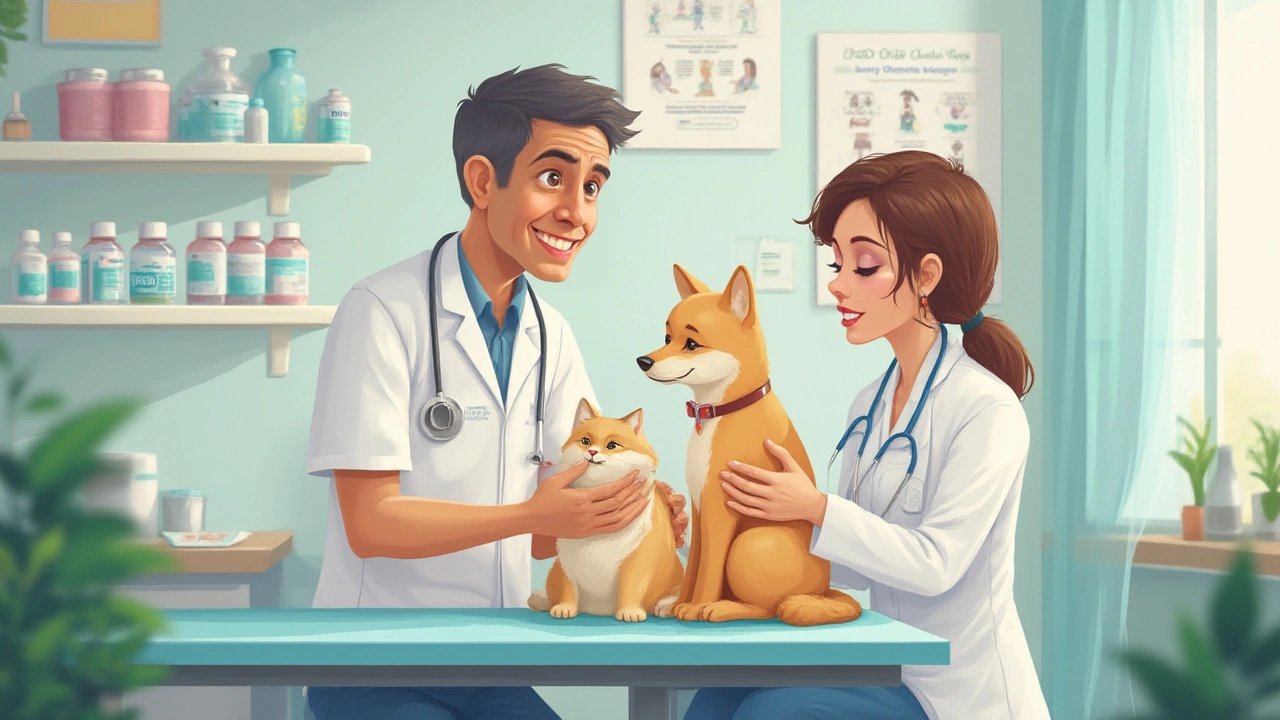Ampicillin in Cats: What You Need to Know
Got a cat that needs antibiotics? Ampicillin is a common choice for many bacterial infections in felines. It works by stopping bacteria from building their cell walls, which kills the germs and helps your cat recover faster.
When to Use Ampicillin
Vets usually prescribe ampicillin for things like skin wounds, ear infections, respiratory infections, and urinary tract infections. If your cat has a fever, swelling, or pus, the vet might run a test and decide ampicillin is right. Never give it without a prescription—dose and duration matter a lot.
How to Dose Safely
The dose depends on your cat’s weight. Most vets aim for 10‑20 mg per kilogram of body weight, given every 12 hours. For a 4 kg cat, that’s about 40‑80 mg twice a day. The medication can come as a pill, a liquid, or an injectable. If you’re using the liquid form, a syringe makes it easier to give the exact amount.
Always follow the vet’s instructions on how long to keep giving the drug. Stopping early can let the infection come back, and it can also cause resistance, which makes future infections harder to treat.
Watch your cat closely for side effects. The most common issues are mild stomach upset, loss of appetite, or a bit of diarrhea. If you see vomiting, severe diarrhea, or signs of an allergic reaction like swelling, hives, or trouble breathing, call the vet right away.
Keep the medication out of reach of other pets and children. Store pills in a cool, dry place and discard any leftover after the prescribed course—don’t try to save it for later.
If your cat has kidney or liver problems, the vet may adjust the dose or choose a different antibiotic. Always let the vet know about any other meds your cat is taking, because ampicillin can interact with certain drugs.
In most cases, ampicillin helps cats bounce back within a week. If there’s no improvement after 3‑5 days, contact the vet. They might need to change the treatment based on lab results.
For kittens under 8 weeks, vets are extra careful. Their bodies process drugs differently, so the dose might be lower or they might choose a different antibiotic. Never guess—always get professional advice.
Before you leave the clinic, ask your vet these quick questions: the exact dose for your cat’s weight, how long the treatment should last, what to do if a dose is missed, and signs that mean you should call back. Knowing the answers saves confusion and keeps your cat on the road to recovery.
Bottom line: ampicillin can be a safe and effective way to treat bacterial infections in cats when used exactly as the vet prescribes. Proper dosing, full-course completion, and monitoring for side effects are the keys to success.
